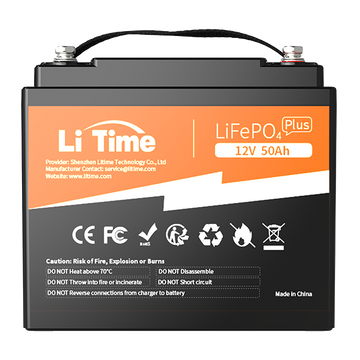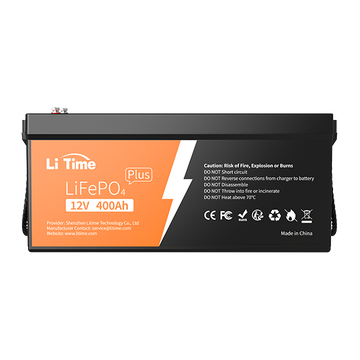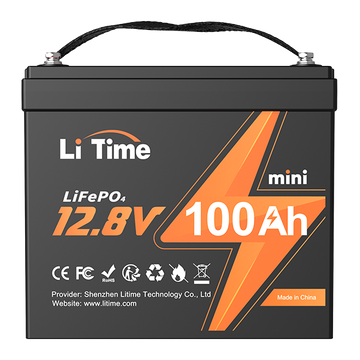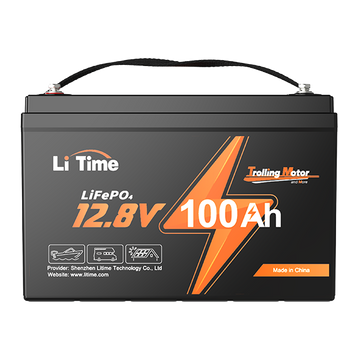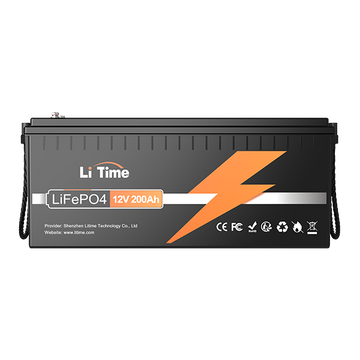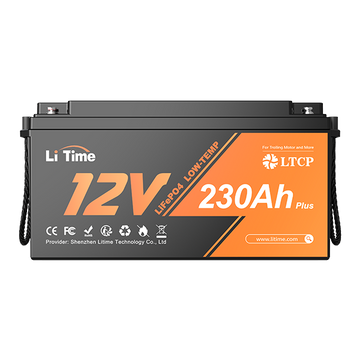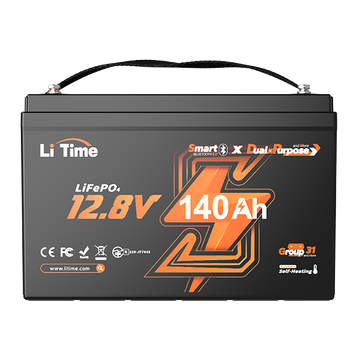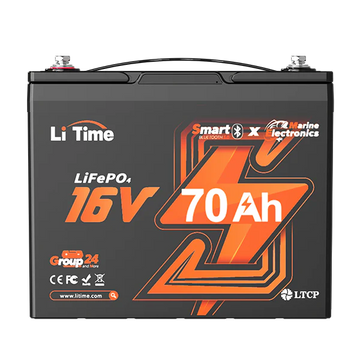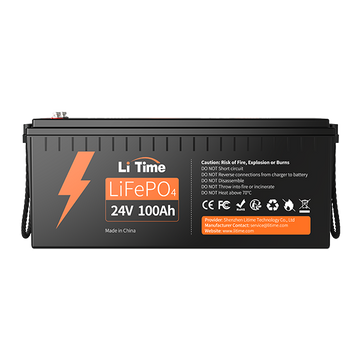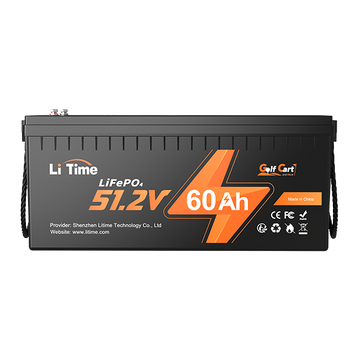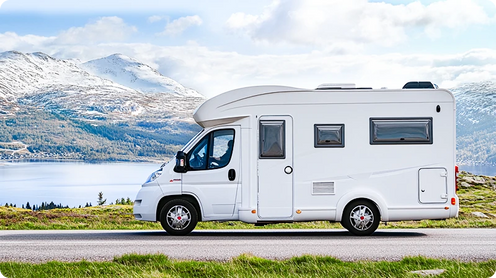If you’re into camping, 4WD touring, RVs or off-grid setups, you’ve probably asked yourself:
AGM vs Lithium Ion Battery: which is better?
Should I stick with an AGM deep-cycle battery or go straight to LiFePO₄ lithium?
Lithium gets a lot of hype, but AGM still has its place. Both chemistries have pros and cons, and the “best” choice depends on your budget, your setup, and how you actually use your gear.This article breaks down the key differences in practical terms – not lab specs – based on how these batteries are really used in camping and RV systems.
Note: this is about LiFePO₄(lithium iron phosphate), not every type of lithium-ion. Other chemistries behave differently.
Part1: What Is AGM Battery?The Old Workhorse

For a long time, AGM (Absorbent Glass Mat) deep-cycle batteries were the default choice for 4WDs, campers, marine and backup systems.
At a glance:
- AGM is a type of lead-acid battery.
- It has been used for years in 4WDs, RVs, boats and UPS/backup systems.
- It still makes sense in some situations, especially where cost is the main factor.
However, AGMs come with some important limitations:
- They are heavy for the amount of usable energy you get.
- They are sensitive to over-discharge and overcharge:
- Run them too low, too often → they die early.
- Charge them incorrectly or leave them undercharged → they die early.
To protect them properly you often need extra devices like low-voltage cut-off guards and external battery monitors, which add cost and wiring complexity.AGMs are a bit like old incandescent lightbulbs: they worked, they still work, but newer technology has clearly overtaken them for many use cases.
Part2: What Is Lithium Ion Battery?The Modern Camping Standard

Lithium iron phosphate (LiFePO₄) has become the modern standard for camping and RV power systems.
Key advantages:
- Much lighter than AGM for the same usable capacity.
- You can safely use most of the capacity without killing the battery.
- It lasts for many years even when cycled regularly.
Where an AGM feels like a brick, a LiFePO₄ battery of similar rated capacity can often be lifted with just a couple of fingers.For typical camping, RV, ute and marine installations, LiFePO₄ now makes far more sense in most cases – especially once you look beyond the price tag and consider usable energy, lifespan and weight.

Part3: AGM vs Lithium Ion Battery: which you need
AGM vs LiFePO₄Lithium ion Battery – Comparison Table
| Aspect | AGM Battery | LiFePO₄ Battery |
|---|---|---|
| Chemistry | Lead-acid (AGM) | Lithium iron phosphate |
| Usable Capacity | ~50% of rated Ah (to protect lifespan) | 80–100% of rated Ah usable |
| Typical 120Ah Usable | ≈ 60Ah | ≈ 100–120Ah |
| Weight (100–120Ah) | ~25–30 kg | ~9–15 kg |
| Cycle Life | ~500 cycles | ~4,000 cycles (to 80% capacity) |
| Charge Efficiency | ~85% | ~97% |
| Discharge Capability | High, simple | High, but limited by BMS rating (must check spec) |
| Monitoring | Voltage reading is “good enough” | Needs BMS/shunt for accurate SoC |
| Upfront Cost | Low | 2× or more vs AGM |
| Best For | Occasional use, low budget | Frequent use, weight/life priority |
3.1 Amp-Hours and Usable Capacity: One Lithium ≈ Two AGMs
To understand the real difference, imagine a bucket of water:
- The bucket holds 100 litres → think of that as 100Ah.
- If you take 1 litre per hour, you can do that for 100 hours.
So if you have a 120Ah AGM, you might assume you can “use 120Ah”.
Technically you can, but there’s a catch: the deeper you discharge an AGM, the faster it wears out.
The percentage you take out each cycle is called Depth of Discharge (DoD).
- Regularly draining an AGM down close to empty is like drinking a whole bottle of whisky every night – you won’t last long.
- Sipping a smaller amount (around 50% DoD) is more sustainable.
For good life from an AGM: you generally want to keep discharge to about 50%.That means your 120Ah AGM effectively gives you around 60Ah of “healthy” usable capacity.If you really need around 120Ah of usable energy, you will likely need two 120Ah AGM batteries.
With LiFePO₄: you can comfortably use 80–100% of the rated capacity.A single 120Ah lithium can realistically give you close to 120Ah of usable capacity and still last many years.
In practical terms: 1 × 120Ah LiFePO₄ ≈ 2 × 120Ah AGM(in usable energy and overall service life)
3.2 Built-In Protection: The Hidden Value of the BMS
From the outside, an AGM and a lithium battery both look like a box with terminals.
The big difference is on the inside.LiFePO₄ batteries include an internal Battery Management System (BMS). This is an electronic controller that:
- Prevents over-discharge
- Prevents overcharge
- Monitors cell temperatures
- Often provides Bluetooth connectivity, so you can see data in an app
- Tracks current in and out to calculate State of Charge (SoC)
Think of it like the fuel management system in a petrol station:
- It measures how much “fuel” (energy) goes in.
- It measures how much goes out.
- It can tell you how much is left in the “tank”.
With AGM:
- You don’t get this intelligence built in.
- You can add external monitors and protection devices, but each one adds cost and wiring complexity.
With LiFePO₄:
- The BMS is included in the battery, and it’s a big part of what you’re paying for.
- A good BMS is not cheap, but it is crucial for performance, longevity and safety.
Not All BMS Units Are Equal
This is also an area where manufacturers can cut corners:
- Some BMS units are only rated for 50A continuous current.
- Better ones are rated for higher currents (e.g. 100A) and have proper heatsinks to manage heat.
If you plan to run inverters, air compressors or other heavy loads, you must check:What continuous discharge current is the BMS rated for?
A cheap lithium battery with an undersized BMS may look fine on paper, but it might not handle the real-world loads you need.You can see more about how to choose lithium BMS.
3.3 Voltage Behaviour and State of Charge
AGM Voltage Curve
With an AGM battery: As it discharges, the voltage gradually drops from around 13V down toward about 10.5V (flat).
You can get a rough idea of how full it is just by measuring voltage with a multimeter.It’s not extremely precise, but it’s good enough for many users.
LiFePO₄Voltage Curve
LiFePO₄ behaves differently: The voltage stays quite flat for most of the discharge.It only drops sharply near the end of the capacity.
This means:
- A simple voltmeter cannot accurately tell you the state of charge of a LiFePO₄ battery.
- That’s where the BMS and/or a proper battery monitor comes in – by measuring amp-hours in and out (like the fuel example), it can calculate SoC far more accurately.
If you care about knowing how much energy you have left, a good BMS and/or shunt-based monitor is essential with LiFePO₄.
3.4 Price: The Biggest Shock Up Front
Now, the part nobody loves: cost.For the same nominal amp-hour rating:
LiFePO₄ is much more expensive than AGM.
Lithium prices have dropped over the past few years, but there is still a clear gap. If you’re comparing 100–120Ah batteries:
- AGM is significantly cheaper up front.
- LiFePO₄ is often around double (or more) the price.
Whether that higher price is “worth it” depends on how much you value:
- Higher usable capacity
- Lower weight
- Longer lifespan
- Better charging efficiency and performance
If you only use your setup occasionally, AGM may be good enough.If you use it often, lithium usually wins over time.
3.5 Weight: Lithium Wins by a Mile
Weight is one of the most obvious, real-world differences.A typical real-world example:
- 100Ah AGM → about 27 kg
- 120Ah LiFePO₄ → under 10 kg
That’s roughly one-third the weight for more usable capacity.This matters if you are:
- Trying to keep canopy or camper weight down
- Managing GVM or tow ball weight
- Lifting batteries in and out by yourself
- Simply tired of wrestling with 30 kg blocks of lead
Even though 100Ah vs 120Ah doesn’t look like a huge jump on paper, the lithium battery often runs your accessories for roughly twice as long, thanks to its deeper usable capacity.
3.6 Discharge Rating: How Much Power at Once?
The discharge rating tells you how much current (amps) you can safely draw from a battery at one time. This is crucial if you’re running:Inverters, Compressors, High-draw appliances (coffee machines, induction cooktops, etc.).
AGM: Very Strong in This Area
AGM batteries generally have excellent discharge capability and can deliver high currents without relying on electronics like a BMS.
LiFePO₄: Check the Spec Carefully
With LiFePO₄, the maximum discharge current varies a lot between models.
A good-quality LiFePO₄ might have a discharge rating of 175A for up to five minutes.Some cheaper or lower-spec units may be as low as 50A continuous.50A is fine for a fridge, lights, small accessories but it’s not enough for bigger inverters, high-draw 12V gear.
Tip: Always check the maximum discharge current on a LiFePO₄ battery and match it to the heaviest load in your system.
3.7 Charge Efficiency: How Much of Your Charging You Keep
Charge efficiency is about how much of the power you put in actually ends up stored in the battery.Imagine you’re using a 40A DC–DC charger.
AGM Charge Efficiency
- Typical charge efficiency: around 85%.
- Out of 40A going in, you effectively keep about 34A worth of useful charge.
- The rest is lost as heat and inefficiency.
LiFePO₄Charge Efficiency
- Typical charge efficiency: around 97%.
- Out of that same 40A, you keep about 38.8A worth of useful charging.
LiFePO₄ charges faster and wastes less of your alternator, solar or DC–DC output.This is especially useful if you only drive a few hours or get limited sun each day.
3.8 Lifespan: How Long Before You’re Buying Again?
Everyone uses their batteries differently, so we need a standard way to compare lifespan. The fairest measure is charge cycles: One charge cycle = one full discharge and recharge.
AGM Cycle Life
Typical numbers: Roughly ~500 charge cycles (often less, depending on use).
Real-world life depends heavily on: Depth of discharge, Temperature,How well they’re charged and maintained
LiFePO₄Cycle Life
Typical numbers: Around ~4,000 charge cycles to 80% remaining capacity.That’s roughly eight times the lifespan of an AGM under similar conditions.
A LiFePO₄ battery rated at 4,000 cycles to 80% will still work fine after 4,000 cycles, but its max capacity will be around 80% of the original.
For most users, that is still perfectly usable.If you use your setup often, or cycle the battery daily (full-time travel, heavy off-grid use),then LiFePO₄ can easily pay for itself over the long term.
Part4: AGM or LiFePO₄Lithium Ion Battery: How to Decide
There’s no universal “right answer”. The best choice is what fits your setup, your usage and your budget.
AGM Might Be Right for You If…
- You are on a tight budget.
- You only camp occasionally (weekenders, a few trips a year).
- Your loads are moderate (fridge, lights, small accessories).
- You are happy with:
- Around 50% usable capacity
- More weight
- Replacing the battery sooner
LiFePO₄Might Be Right for You If…
- You want maximum usable capacity from a single battery.
- Weight is a big factor (canopy, GVM, towing limits).
- You camp or travel often and cycle the battery a lot.
- You want:
- Faster, more efficient charging
- Much longer lifespan (thousands of cycles)
- A more future-proof and flexible setup
Final Thoughts
AGM and LiFePO₄ ilithium ion battery both work. You are not “wrong” for choosing either.AGM is proven, cheaper up front, and fine for lighter, occasional use.Lithium ion costs more initially but gives you: More usable energy, Far less weight, Much longer life, Better charging efficiency, Built-in BMS protection and monitoring.
A single quality LiFePO₄ battery usually beats two AGMs on real-world value – while making your setup lighter, safer and easier to live with on the road. Since you are putting the battery inside a vehicle, caravan or boat – one of your biggest investments – it makes sense to: Choose LiFePO₄ from a reputable supplier, not just the absolute cheapest unknown option.

FAQs About AGM & lithium ion Battery
Q1. How does AGM safety compare to lithium?
Both are safe when well designed. Modern LiFePO₄ lithium is very stable and has a BMS for protection. AGM can leak or vent gas if abused. The bigger risk for lithium is cheap packs with poor BMS, so brand quality matters more than chemistry alone.
Q2. A 100Ah lithium battery equals what size AGM?
Because you usually use only ~50% of an AGM but 80–100% of LiFePO₄, a 100Ah lithium is roughly equivalent to 200Ah of AGM in usable energy (or two 100Ah AGM batteries).
Q3. Is lithium-ion the smarter choice than AGM?
For frequent camping, off-grid use, and weight-sensitive builds, yes—LiFePO₄ is usually smarter: lighter, more usable capacity, far longer life. If you’re on a tight budget and only use power occasionally, AGM can still be good enough.
